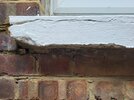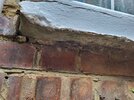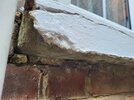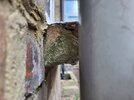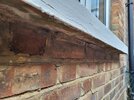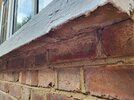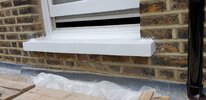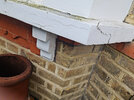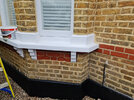Hello, I'm in the middle of repainting our sandstone window sills on our 1910 house, and looking for some advice on what to do about the currently unpainted undersides of the ground floor sills - they are slightly eroded all the way along, plus one end is particularly damaged (see photos). I'm just trying to work out what is needed in terms of breathability etc and what will protect the house best. The first floor sills are already painted underneath and seem in better condition.
Should I paint the underneath on the ground floor sills too to protect against further erosion (Sandtex masonry paint)? And/or would it be best to patch up with some masonry filler first (I have Toupret), either just the very damaged end or all the way along (and can I use the Toupret for the pointing underneath too)? OR would either of these risk causing more damp by reducing the breathability of the stone?
Grateful for any advice!
Should I paint the underneath on the ground floor sills too to protect against further erosion (Sandtex masonry paint)? And/or would it be best to patch up with some masonry filler first (I have Toupret), either just the very damaged end or all the way along (and can I use the Toupret for the pointing underneath too)? OR would either of these risk causing more damp by reducing the breathability of the stone?
Grateful for any advice!


